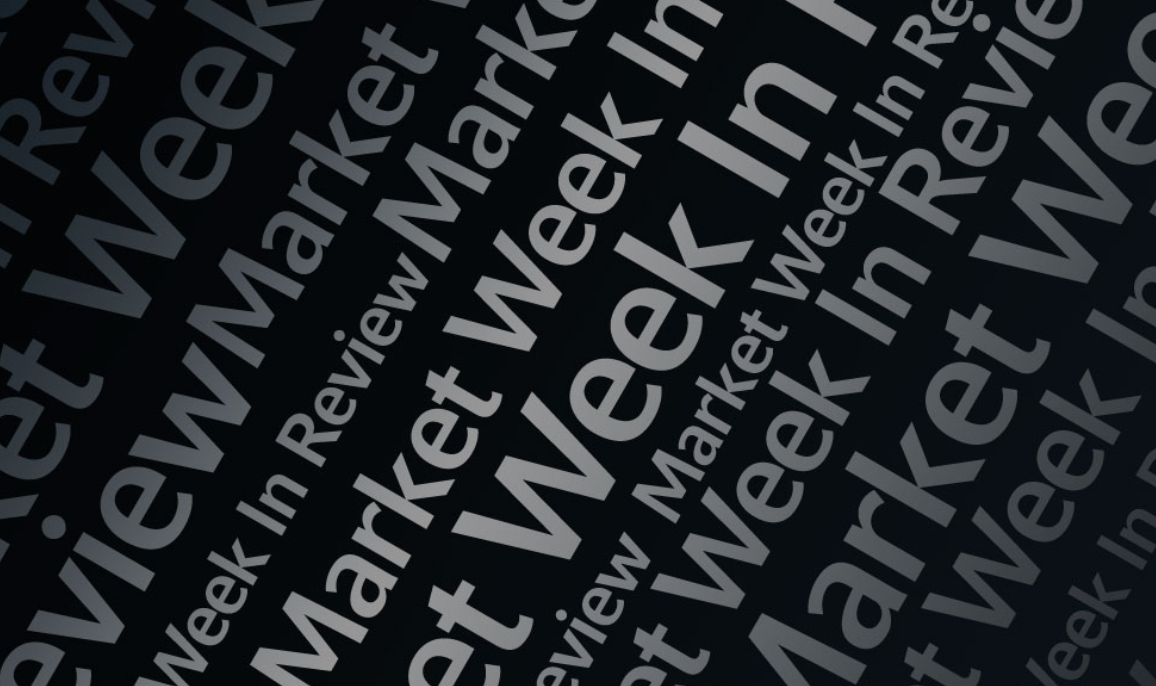by Hubert Marleau, Market Economist, Palos Management
It's Not a “Glorious Revolution” or a “French Revolution” of Finance. It’s “Gamification” and a “New Invisible Hand”.
In itself, a short squeeze amid a falling market is an amazing phenomenon. Yet, what has captivated the public audience was how an assembly of retail investors with the aid of the Reddit platform has tricked a bunch of Wall Street professionals who shorted a number of stocks which did not justify soaring market capitalization, (especially GameStop), into losing billions of dollars.
The mission was to stick it to the institutions. While the drama highlights the existence of a deep political divide between boomers and millennials, rich and poor, elite and commoners, it has a lot more to do with the role of libertarianism in society. Liberty is not about choosing between good and evil.
It's about choosing between variants of good. Without responsibility, liberty can be a dangerous item. I do not have an answer as to how this can be justly resolved; but I do believe that it’s politically solvable because people can surely agree that actions which harm others should not be permissable. It's unrealistic to think that last week’s extraordinary saga will break the stock market or the capitalistic system. The SEC will definitely investigate and punish whoever, if the process is deemed to be criminal. However if not, I don’t think that the SEC can stop it or regulate it. The point is that there is nothing illegal about having the same opinion.
Interestingly, most of these retail traders reside in NY and NE. Another interesting point is that both extremes of the political spectrum, from Representative Alexnadra Occasio-Cortez on the left to Senator Ted Cruz on the right, agreed about the unfairness of restricting individual traders while big institutions have no curbs. Thus, I have no intention of wasting too much of your time on the political aspect of the episode—-enough has been said on social media and by TV commentators.
Suffice it to say that the stock market party soured because the whole thing is crazy. The S&P 500 posted a weekly decline of 3.3% because investors were fixated on the madness of the crowd. Many retail traders and specific hedge funds sold regular stock positions to meet surging cash demands to re-engage on the buy side or cover the heavily short squeeze stocks, GameStop and company.
We have not heard the end of this extraordinary saga. Nonetheless, I would not panic over this. Indeed, investors will have to come to terms with the idea that faster markets are here to stay. But in time, they will have to re-orient and deal with this new type of coordinated trading. Smart
young people grew up with the internet and, in turn, understands the value of networks and know how to use free access to the market, apply the hyper-interconnection of social media and take advantage of structural inefficiency in the system. Thus, the power of popular trading platforms will be a force to be reckoned with, forcing investors to amend the management of risk and opportunities. Now we have a right-tail risk.
The acute short squeeze was not a “Democratization of Trading” or a ‘French Revolution of Finance” or a “Glorious Revolution of Markets”. It was a bunch of smart guys who are orchestrating a new “Game” under a new “Invisible Hand” that the professionals greatly underestimated or completely missed. Trust me on this one, the pros are not as smart as the young new traders when it comes to handling a smartphone and using social media.
Moreover, Wall Street’s “know it all” traders tend to ignore the retail player thinking that it's unnecessary to hedge retail option orders. Given that houses like Robinhood receive payment for streaming their order flow and data to buyers, they can offer commission-free trades, allowing retailers a fair shake or the feeling of getting one.
In this connection, I shall from hereon keep some dry powder to take advantage of anomalies of such nature if they were to occur again. Yes, I intend to monitor the YOLO traders because it may become a recurring phenomenon. However I shall not imitate them. I do not believe it to be a fixture of markets because I know that the stock market won’t hand you gains because you think that you deserve them. However, it could well provide selective opportunities.
Episodes of this nature which were experienced in the last few months will not break the stock market or capitalism. Stock manias are common but rarely turn into panics. Remember Herbert Stein’s law that “if something can’t continue, it won’t”. The stock market is much bigger than the few names that were part of a trading frenzy. Macroeconomic developments matter more than a few hot meme stocks.
Fundamentally, the performance of the broader equity markets is dependent on the path of the economy which is a function firstly of employment, productivity and inflation. Secondly of the velocity and quantity of the money supply and thirdly on how the interplay between the relative weight of capital and labour, produces earnings for the risk takers and entrepreneurs. On this score, the stock market shouldn't have soured last week.
Last Wednesday, the Fed made it clear that it was not about to change its monetary stance any time soon. Chairman Powell pledged that the Fed will continue to keep its policy rate where it is and pump money into the economy until there is a full-rebound from the pandemic. Although he acknowledged that there has been some progress on the vaccine rollout and good evidence to support a stronger economy in the second half of 2021, he emphasized that any talk of removing monetary accommodation was premature, given the inflation and employment dynamics.
There are 9.4 million jobs to bring back in order to reach full employment. Indexes for core and headline PCE in December were running at the annual rate of 1.5% and 1.3% respectively. Moreover he did a good job of installing credibility in the marketplace that the monetary authorities would not let fears of financial stability deter them from their inflation and employment goals.
He said: quote, “So on matters of financial stability, we have a framework. We don’t look at one or two things. We made the framework public after the financial crisis so it can be criticized and held accountable. We look at say set prices and look at leverage in the banking system and non-banking system and corporate and households and we look at also funding risk. If you look at across that range of readings, they’re different and we monitor them carefully.
Overall it’s moderate. Our overall goal is to assure the financial system itself is resilient to shocks of all kinds and it’s strong and resilient and includes not just banks but money market funds and different kinds of non-bank financial structures as well.” I could have shortened the aforementioned statement by just pointing that the Fed’s concern over financial stability would rise only if overvaluation looked to be a reason for creating a systemic risk. The bottom line is that it's a big hurdle to overcome at this time. Thus the message is clear that the Fed is not about to change its posture on conjectures but squarely on actual results pertaining to inflation and employment.
Last Thursday, the BEA reported that the U.S. economy grew in real terms at the annual rate of 4% in Q4/2020. The real story is that the economy showed remarkable resilience amid the worst of the pandemic. As a matter of fact, N-GDP in Q4 rose to $21.480 trillion which is only $268 billion less than the 2019 Q/4 peak of $21.747 trillion. If one takes into account that household expenditure on services were $574 billion less in Q4/2020 than they were in the comparable period of 2019, N-GDP actually increased by $306 billion or 1.4%. R-GDP is rebounding faster than it did in the Great Recession.
Actually, Americans earned more total wages and salary income in December than in any month before the pandemic, even though the economy is still missing 9.4 million jobs. The truth is that the economy is on track to stage a mini boom later in the year if the vaccines provide enough herd immunity to restore confidence in the return to some level of normalcy whether social distancing is obligatory or voluntarily observed. Dr. Fauci, White House health advisor, said that “Pfizer and Moderna’s vaccines could be easily adapted to target new strains of the virus.”
Consequently, I rest my case for a mini boom later this year on a trio of factors:
First, the durability of monetary and continuing fiscal support— even though I expect that Amricans will end up with a watered down fiscal relief package ($900bn plus another $750bn) rather than the Biden $2.8tn overall proposal), Second, the $1.2 trillion of extra personal savings is ready to be spent, especially on personal services, travelling and restaurants where the unemployment situation is concentrated. Why do I
know this? The U.S. money supply (M2) is up 25.3 % over last year. An enormous increase. What is even more enormous is that M1--the highly transactional part of M2--accounts for 65% of the overall increase, suggesting a big potential increase in the turnover of money. It is normally around 25%.
Thirdly, the existence of productivity gains in several industries has started to show up in the data reported by the BLS. Spending on information processing equipment, research and development and robotic products is rapidly rising. Businesses have invested more than $1.3 trillion in Q4/2020 in productivity enhancement, up 9.0% y/y.
The economy will face an uphill climb at the start of this year as it is expected to grow only at the annual rate of 2.8% in Q1. Assuming a successful inoculation campaign that will rescue the economy from Covid, the projected increase in productivity and the anticipated unlocking of consumer demand will reaccelerate the growth rate above 5.0% by mid-spring. The U.S. economy is poised to add more jobs in 2021 than any other years on record dating back to 1939. Oxford Economics predicts that 5.8 million jobs will be created in 2021 while economists at the University of Michigan have a 5.3 million forecast.
The aforementioned outcome is of significant size to warrant optimism. And, if one buys the JPM Kolanovic’s argument that equity positioning is in the 30th percentile relative to the past 15 years, both for systematic and discretionary managers, then buying the dips is still a good strategy. Let it be known to all, that Marko Kolanovic is usually right when he predicts the direction of markets. When it comes to leverage, Goldman’s Kostic observed that just prior to the dot.com bust, household credit card debt jumped by 5% while checking deposits fell and margin debt rose 150%. Currently credit card debt is down 10% while checking deposits are soaring and margin debt is only up 35%.
Copyright © Palos Management













